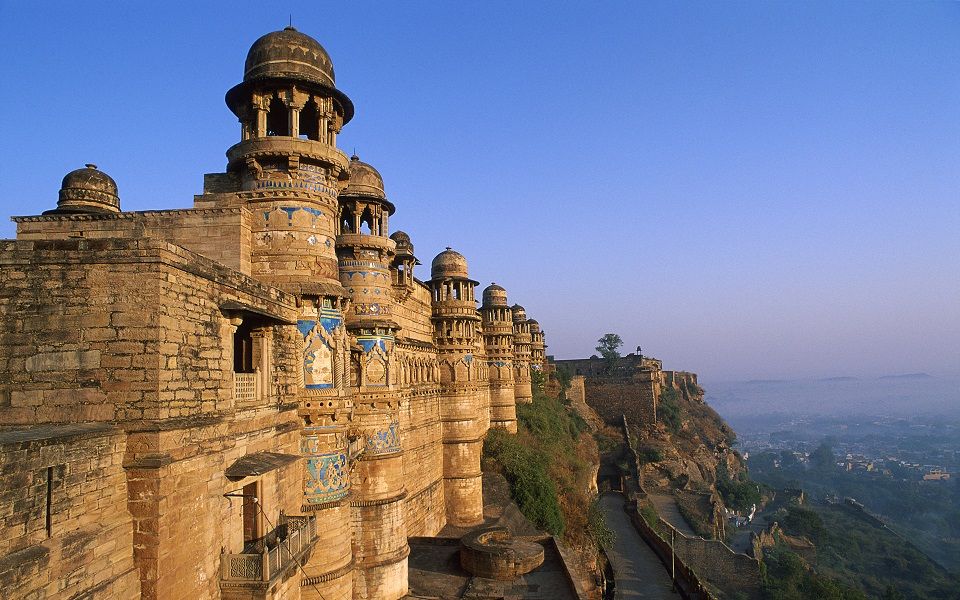The Rajputs, Marathas, Mughals, British, Muslim rulers, Sikhs and some more may have played out their roles in India’s rich history, but they all seem to have a unique common link to a city in central India – Gwalior. The Gwalior Fort is perched on a hilltop, near the Gwalior city of Madhya Pradesh. Regarded… Continue reading Gwalior Fort – India’s most impregnable fortress
Tag: History
Rock Cut Mountain Statue of Lord Narasimha
In the Lalitpur district of Uttar Pradesh is the ancient village of Dudhai, which is home to an astounding Statue of Lord Narasimha . Cut into the rock face of a hillside way off the beaten track, relatively few pilgrims search out this hidden treasure. Although it is listed as a sacred site by the… Continue reading Rock Cut Mountain Statue of Lord Narasimha
Destruction of The Indian System of Education by British
During the time of the East India Company and later, in the British rule, there seem to have been two motives working in the minds of the rulers: plundering the wealth of this land and the ‘white man’s burden’ of civilizing the natives (the term used by them to refer to all Indians). We shall… Continue reading Destruction of The Indian System of Education by British
1400 Years Old sun clock of Chola Empire
Kingdoms and kings are history, but certain devices bequeathed by them tell the story of their times. One such historical instrument is the 1,400-year-old sun clock mounted on the 35-feet-high inner wall of Sivayoginathar temple at Thiruvisanallur, some 12 km from the Thanjavur district of Tamil Nadu. It is the only ‘wall clock’ in Tamil Nadu… Continue reading 1400 Years Old sun clock of Chola Empire
Goddess Lakshmi statue in Pompeii
In 1939, Italian archeologist Prof Maiuri, discovered an artifact in the ruins of ancient Pompeii, that had a very Indian origin. This ivory statuette which survived the disaster and lasted all these 2000 years was identified by Prof Maiuri as that of the Goddess Lakshmi and dated to around 1AD. It has since then been… Continue reading Goddess Lakshmi statue in Pompeii
The Lotus in Indian Art
In the vast repertoire of Indian ornamental motifs, among the symbols and devices that recur in traditional art and architecture, the lotus occupies pride of place. Unlike western art, in which great emphasis is laid on photographic realism and the naturalistic treatment of human and animal forms, the main concerns in Indian art are profoundly… Continue reading The Lotus in Indian Art
Vaishali – World’s First Republic
Although it is widely believed that the idea of democracy and a constitution were created in democratic Athens, around 506 BCE, India saw the emergence of city republics around 6th BCE where the concept of an elected ruler had taken root. Vaishali, considered to be World’s First Republic and currently an Archaeological site, is situated… Continue reading Vaishali – World’s First Republic
15th-century Neemrana Fort Palace
The Fort Palace of Neemrana is about 125 km from Delhi, on the road to Jaipur in Rajasthan. Built in 1464, Neemrana Fort Palace became the third capital of the descendants of Prithviraj Chauhan III, who had fled Delhi in 1192 after he was vanquished in battle by Muhammad Ghori. Neemrana’s rulers, proud of lineage,… Continue reading 15th-century Neemrana Fort Palace
Contributions of Sikhs as Soldiers and Warriors
Sikhs by nature are respectful, courageous, hardworking, and enterprising. Look into their short span of history and you will find their pitcher is full of sacrifices and hard work which has contributed so much towards the building of the Indian nation. If not for them, the course of Indian History would have been very different.… Continue reading Contributions of Sikhs as Soldiers and Warriors
Indian Origins of Zoroastrians or Parsees
Indians (Indus valley residents) and Iranians (Mesopotamians) shared a common religious past, which led historians to sometimes even term the common ancestral religion as Proto-Indo-Iranian religion. Have we ever understood the implications of this common religious past of the two communities on the historical studies of the two regions? Zoroastrianism was the most prominent religion… Continue reading Indian Origins of Zoroastrians or Parsees

